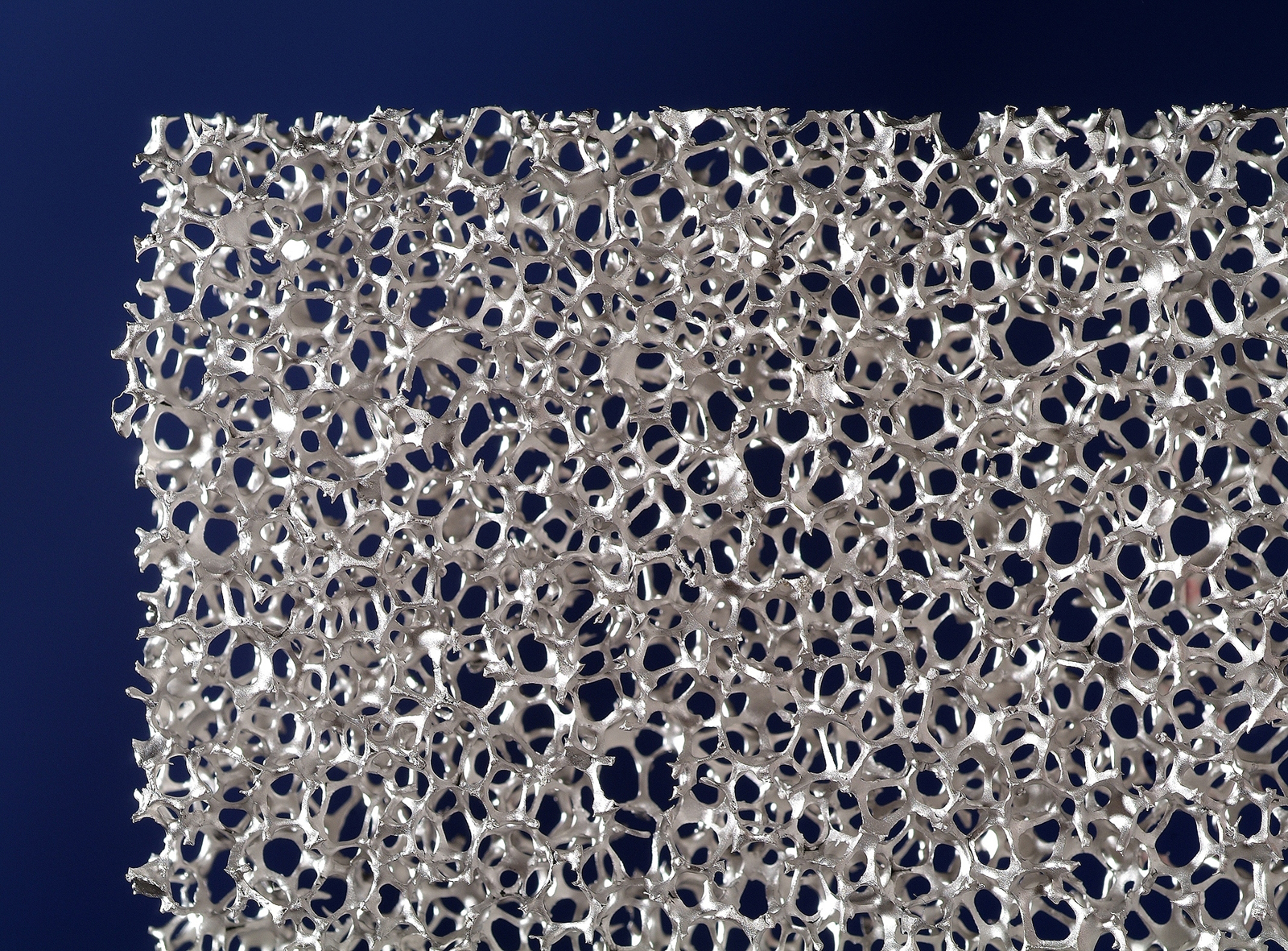Titanium foams replace injured bones
Flexible yet rigid like a human bone, and immediately capable of bearing loads: A new kind of implant, made of titanium foam, resembles the inside of a bone in terms of its structural configuration. Not only does this make it less stiff than conventional massive implants. It also promotes ingrowth into surrounding bones.
The greater one‘s responsibilities, the more a person grows. The same principle applies to the human bone: The greater the forces it bears, the thicker the tissue it develops. Those parts of the human skeleton subject to lesser strains tend to have lesser bone density. The force of stress stimulates the growth of the matrix. Medical professionals will soon be able to utilize this effect more efficiently, so that implants bond to their patients‘ bones on more sustained and stable basis. To do so, however, the bone replacement must be shaped in a manner that fosters ingrowth – featuring pores and channels into which blood vessels and bone cells can grow unimpeded. Among implants, the titanium alloy Ti6Al4V is the material of choice. It is durable, stable, resilient, and well tolerated by the body. But it is somewhat difficult to manufacture: titanium reacts with oxygen, nitrogen and carbon at high temperatures, for example. This makes it brittle and breakable. The range of production processes is equally limited.
There are still no established processes that can be used to produce complex internal structures. This is why massive titanium implants are primarily used for defects in load-bearing bones. Admittedly, many of these possess structured surfaces that provide bone cells with firm support. But the resulting bond remains delicate. Moreover, the traits of massive implants are different from those of the human skeleton: they are substantially stiffer, and, thus, carry higher loads. »The adjacent bone bears hardly any load any more, and even deteriorates in the worst case. Then the implant becomes loose and has to be replaced«, explains Dr.-Ing. Peter Quadbeck of the Fraunhofer Institute for Manufacturing and Advanced Materials IFAM in Dresden. Quadbeck coordinates the »TiFoam« Project, which yielded a titanium-based substance for a new generation of implants. The foam-like structure of the substance resembles the spongiosa found inside the bone.
The titanium foam is the result of a powder metallurgy-based molding process that has already proven its value in the industrial production of ceramic filters for aluminum casting. Open-cell polyurethane (PU) foams are saturated with a solution consisting of a binding medium and a fine titanium powder. The powder cleaves to the cellular structures of the foams. The PU and binding agents are then vaporized. What remains is a semblance of the foam structures, which is ultimately sintered. »The mechanical properties of titanium foams made this way closely approach those of the human bone«, reports Quadbeck. »This applies foremost to the balance between extreme durability and minimal rigidity.« The former is an important precondition for its use on bones, which have to sustain the forces of both weight and motion. Bone-like rigidity allows for stress forces to be transmitted; with the new formation of bone cells, it also fosters healing of the implant. Consequently, stress can and should be applied to the implant immediately after insertion.
In the »TiFoam« project, the research partners concentrated on demonstrating the viability of titanium foam for replacement of defective vertebral bodies. The foam is equally suitable for »repairing« other severely stressed bones. In addition to the materials scientists from the Fraunhofer institutes IFAM and IKTS – the Institute for Ceramic Technologies and Systems in Dresden – physicians from the medical center at the Technical University of Dresden and from several companies were involved in developing the titanium foam. Project partner InnoTERE already announced that it would soon develop and manufacture »TiFoam«-based bone implants.
